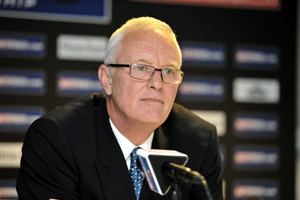
Prior to the return of Barry Hearn to the snooker circuit in 2010, the professional calendar had a fairly familiar structure, which in the UK at least, was dictated by the four major BBC events (plus the Welsh Open), with others placed around them.
Now though, the landscape is rapidly changing and below I consider the effects of this and how various people, be it players, fans and even us bloggers are dealing with that change. And I don’t even mention rankings. Well, almost…
- Click here to view the calendar for the 2012/13 season
It does not feel like it sometimes, but I have been the author of Pro Snooker Blog for over four years now, in that time publishing over 2,300 posts and spending more hours than I would like to think about sat in front of this computer screen.
A few weeks ago I was looking back at some of my posts from the early years and it struck me as to just how much the blog has evolved as time has gone by, largely without me even noticing it. Back in the early years I would create a different post for every session of every tournament, I would cover all but the most obscure events and full ranking tournaments were so rare that each and every one felt like a special occasion.
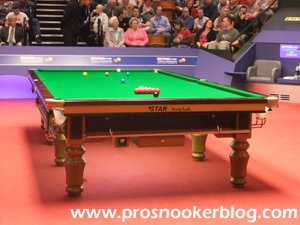
Fast-forward to now however and the scene has changed markedly. Whereas once the end of the World Championship in May signalled the end of the professional season and the players could head to the golf course for three or four months, in 2012 the first qualifiers were held within a month of the Crucible, not to mention the Q School. Already now this season we have had 14 events carrying ranking points, including four full-ranking events.
For me it has been interesting to note how various different people have reacted during what is clearly the most significant transitional phase that the sport has experienced in a number of years. While in the main the changes are positive, as with anything in life, there are going to be those who are not happy, those who do not adapt and routines for all of us that are hard to break.
Below then, I consider both how the players have adapted, as well as the fans and try to see if I can reach any meaningful conclusions…
The Players
Clearly, there are a number of players who have thrived upon the increased playing opportunities that now exist in the snooker.
Perhaps the most obvious is Stuart Bingham, who from a cursory glance at his playing statistics, has not skipped a professional tournament to which he has been eligible to enter, at least since Barry Hearn introduced the PTCs to the sport.
Always a player who has worked hard and given every tournament 100% regardless of its stature, Stuart has deservedly been well-rewarded for his efforts, rising to a career high ranking of number 10, lifting his first ranking event title and lighting up the Premier League during his début season to reach the semi-finals.
Similarly, the likes of Mark Davis and Marcus Campbell are among the other experienced players who have embraced the opportunity to play more snooker in recent years, each producing their best snooker as they approached the age of 40 and reaching the career-high rankings of late.
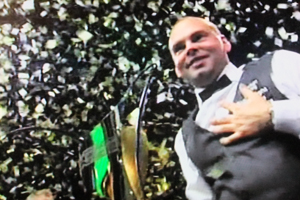
It is not just the older players who have benefited however, take the likes of up and coming Welshmen Jamie Jones and Michael White, who are just a couple of the new generation to have committed themselves to the new tournaments and have been rewarded by moving up the ranking list. Tour newcomers such as Jack Lisowski and Anthony McGill too have been able to climb far quicker than they otherwise might have been able to under the old system.
Another obvious player to taken advantage of the increase in tournaments is former world number one Mark Selby, who along with Shaun Murphy is one of the most high-profile players who rarely misses an event. While Selby has not performed as well as he would have liked during the major tournaments during the last couple of seasons, his consistency has been second to none and he has been well-rewarded in terms of ranking.
That said, is there a danger of the much-discussed ‘burn out’ as famously dismissed by Barry Hearn at the Crucible this year? Mark Selby of course suffered from a serious neck injury towards the end of last season which ruined his chances of a maiden world title in Sheffield, while it was telling that there were also a number of ‘top players’ who did not perform to the best of their abilities at the Crucible, perhaps for this reason?
It is plain to see that not everyone sees the need to play constantly, even Shaun Murphy was to some degree prepared to sacrifice June’s Wuxi Classic tournament for an extended post-World Championship break, while John Higgins did not pick up his cue competitively prior to August’s PTC2 event in Gloucester.
Look too at new world number one Judd Trump, who not so long ago was coming under fire for having elected not to enter the Australian Goldfields Open. At the time it appeared as though he had squandered an opportunity to close the gap to Mark Selby at the head of the rankings, but a few months on and perhaps Judd has benefited from that extra week away from competition? Either way, it is a decision that has certainly not done him any harm.
While the likes of John and Judd have missed tournaments, there are also other players who despite having entered events, have from the outside at least, appeared to be going through the motions to some degree.
Take for example Matthew Stevens, who following his semi-final run at the World Championship has not repeated that same form so this term. A few days ago he was quoted by the York Press as saying:
“I’ve played a couple of Players Tour Championship events but I haven’t got started yet,”
“The International is coming up now and the UK. They are two big tournaments and I am really looking forward to it.”
“I like the big events. I make sure I put my work in before the event but I don’t tend to have played much before. I haven’t really picked my cue up so far this season. I like the tournaments in this country but, obviously the way it is going now, you have to be prepared to play in Asia. I don’t really tend to start playing properly until just before Christmas.”
While the season starts in June then, it appears fair to infer that for Matthew, the campaign does not truly kick-off until December, and I am sure that he is far from the only player sharing this attitude.
That is not though meant in any way as a criticism, as I think we are now probably at a point where there are just too many events on the calendar to expect every player to enter each event and give the same level of commitment. Indeed with the exception of Stuart Bingham (who surely must be a machine), I think that the majority of players would probably benefit from missing the odd tournament here and there, certainly PTC events, in order to remain fresh.
The primary fear of course is in terms of ranking position, while ultimately the players also have a living to earn and each tournament is an opportunity to win prize money.
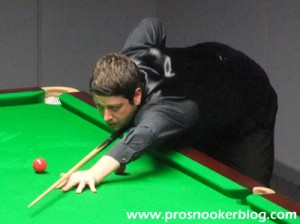
As Rod Lawler explained to me however, there is also an element of players having to protect their form, perhaps coming to recognise when is a good time to miss a tournament. Two and a half years into the new regime, players will be better learning to do so and the fact that Trump for example has elected to miss event such as Australia and the Shoot Out, may be an example of this.
Another is Ding Junhui, who played in only around half of the PTC events that have been held since their introduction in 2010, something that has undoubtedly contributed towards his tumbling ranking. With the introduction of the Asian PTC events however, perhaps entering these will better allow him to miss certain events, while still allowing him to earn ranking points.
The much-anticipated move to a money list is another change that may allow players a little more luxury when it comes to entering events, with a major win likely to be enough in itself to guarantee a high ranking. It remains to be seen how it will work in practice from 2014/15, but at present it looks as though the move will favour silverware over consistency, certainly in comparison to the current system.
The Fans
It is not though just the players who have had to adapt to the changing calendar, but also the fans, both the diehards and those of a more casual nature. This is particularly the case within the UK, where the harsh reality is that for the majority, snooker does not exist beyond the BBC tournaments.
Indeed, I am asked on almost a daily basis on Twitter as to when the next BBC event will be staged, ignoring the fact for example that the players are at that time fighting it out for £125,000 in a huge tournament in China.
While it is not unusual in sport for interest to peak at particular times of the year and not realistic to expect all snooker fans to be as interested as those of you reading this blog, with the BBC now screening just three events per year, to the general public here in the UK at least, the season does not start until December.

Is there an obvious answer? With two of those three BBC events taking space within a month, on the face of it, there would be a case for moving either the UK Championship or the Masters from their traditional spots in the calendar, to better spread them out. This would depend on the position of contracts and no doubt raise eyebrows with the traditionalists, but could it help to better keep snooker in the national consciousness following the climax of the World Championship in May?
The other obvious idea is for the governing body to push to try and have further events staged on other terrestrial TV stations here, such as ITV4 or Channel 4. If that were so easy to achieve however, one sense that it would have been done already.
While the above concerns those who do not watch snooker all of the time, on the other side of the coin, is there also a risk of saturation to those of us who are alive to the development of snooker and the amount of tournaments available on live streams and on Eurosport?
To some extent I am sure that there is, for example after the World Championship, tournaments such as the Wuxi Classic, 6-Red World Championship and Australian Goldfields Open were upon us so quickly this season that even I as a serious snooker fan found it hard to invest too much into those tournaments. Other bloggers were talking about the need to ‘have a break’ after the Crucible and I do feel that there can sometimes be too much of a good thing. After all, there is nothing better in sport at building anticipation than an off-season.

Turning to the next few weeks, I notice that from the 12th November 2012 to the 9th December 2012, there is just a single day on which no professional snooker is being played, with matches coming from six different competitions.
Aside from the pure volume of snooker, with ET’s, PTC’s and qualifiers for some tournaments coming before venues for others, I wonder whether there is a danger of some losing track of what exactly is going on?
Perhaps, but is there anything that can be done about it?
I do think that as the old calendar has expanded, with new events being positioned around those better established, perhaps the time has come for a more structured overhaul, starting from a clean piece of paper. In practice this is obviously easier said than done, with long-term contracts already no doubt in place, but a better organised calendar, helping to reduce travel time for players, to better group certain events together and to perhaps bring one of the BBC events further forward might bring benefits in the long-run.
Commercially, maybe there is also to somehow market the various events in a way that the general public can better understand what they are all about. Barry Hearn has spoken about untangling the ranking system with the introduction of a money list, but perhaps also the tournaments themselves need to be looked at, with so many different levels of events, both ranking and invitational now on the calendar.
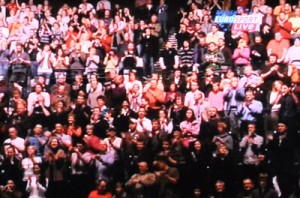
Take tennis for example, in 2009 they undertook a re-branding exercise whereby tour events were divided into Grand Slams, Masters 1000’s, 500’s and 250’s, the numbers referencing the amount of ranking points available for the winner of each event. From the outside, the system looks to work well, with each player required to compete in a certain amount of each category per season, with their best 18 results being taken into account for their ranking. Everybody knows where they stand.
Returning to the original point, in the grand scheme of things, is too much snooker a problem from a fan perspective? Probably not, but perhaps there are changes that could be made to perhaps better organise the events and make the more accessible to the man in the street.
Conclusion
In many ways, the issues raised in terms of those playing the game and those watching it, are very much the same and for me amount to a need to shake off old habits and adapt to a changing sport as best as possible.
While until relatively recently it was far to say that the season did not start until October, with the UK Championship in December representing the first major event of the calendar, those days are now a thing of the past.
With tournaments now held all over the world, perhaps now we are finally in a position where like other sports such as football, golf and tennis, events are not so rare that everybody with an interest in the sport is expected to watch every one and by the same token, neither should all of the players be expected to enter every one.
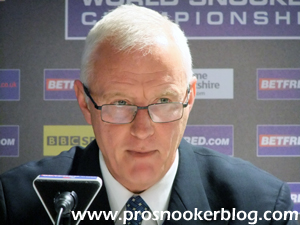
Despite that though, at least for the time being, those who are prepared to embrace the calendar and not just play in, but really commit to the events all-year round, will continue to be rewarded. It will be interesting to see whether this is something that World Snooker will seek to underline by overhauling the calendar from the ground up, or indeed whether this even is a concern that they share.
As ever, time will tell. We are now at the halfway point of Barry Hearn’s five-year plan and while we have already seen many changes to the face of snooker, I suspect that we are in for a few more surprises yet as he continues his revolution…
